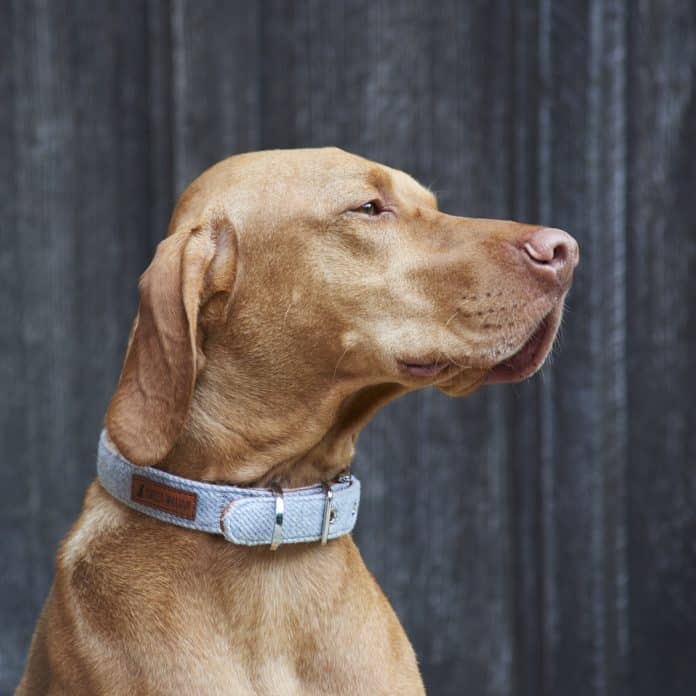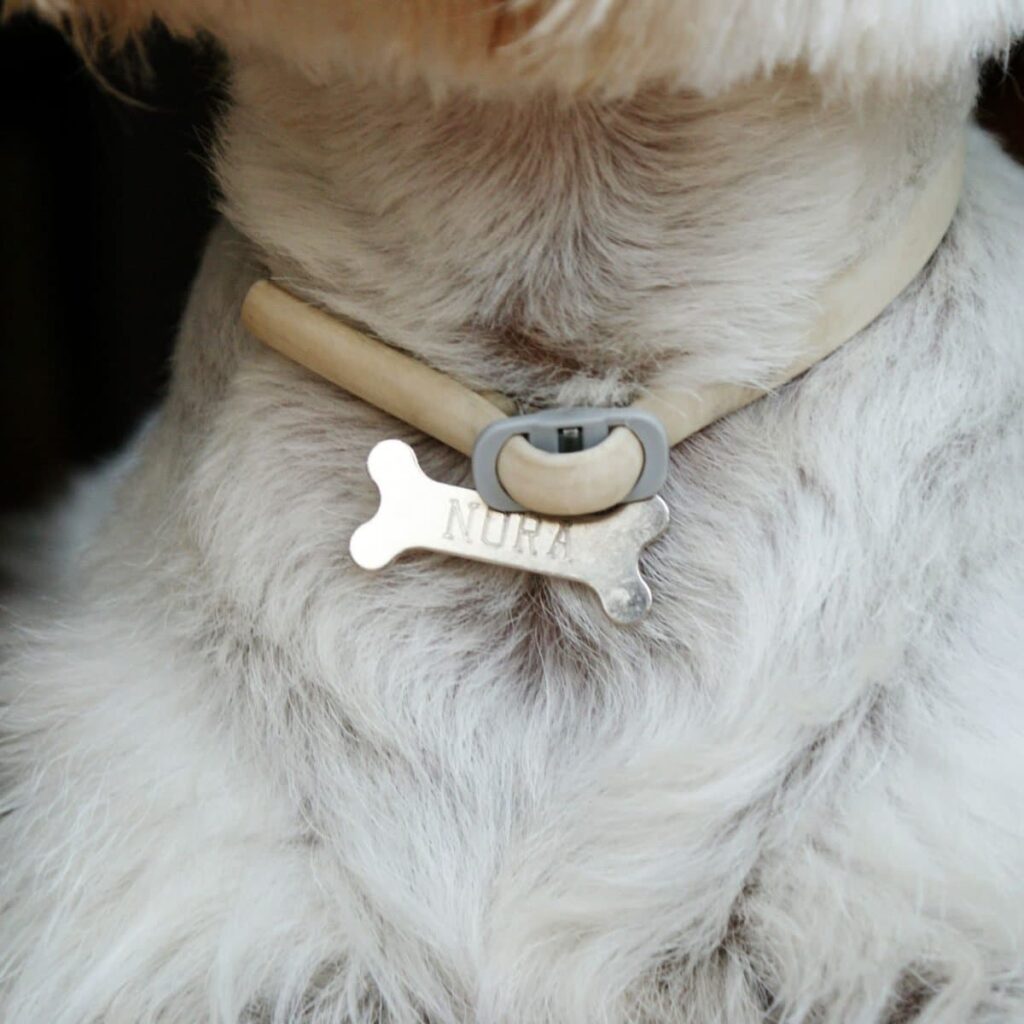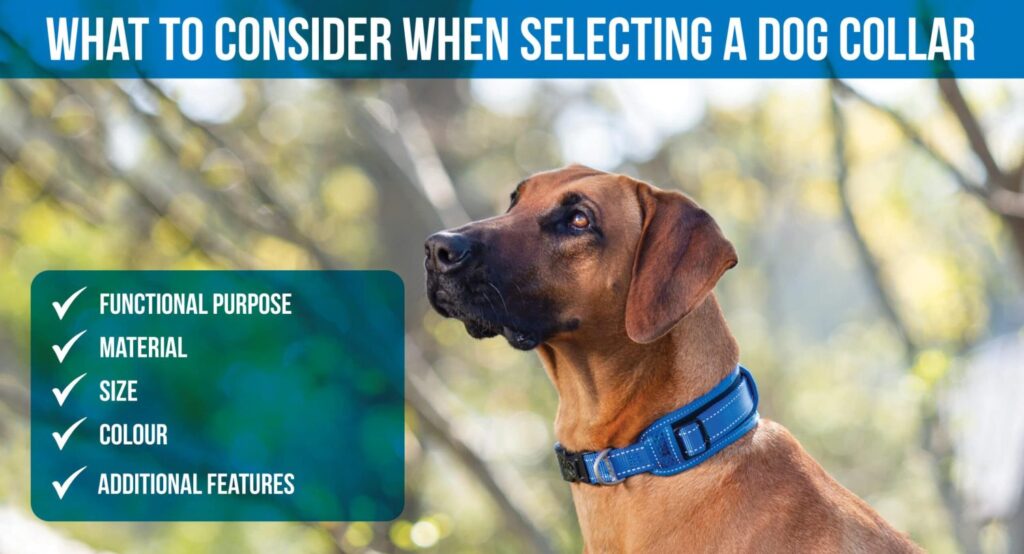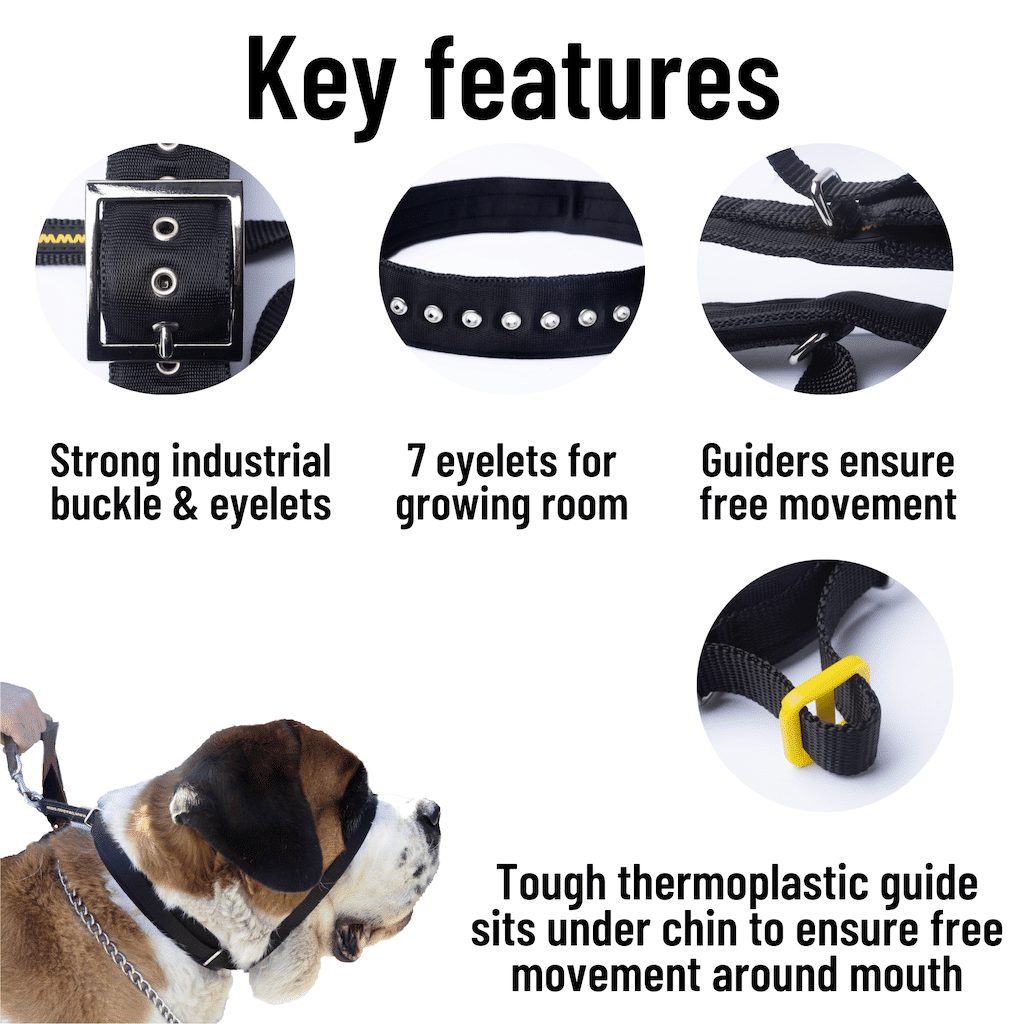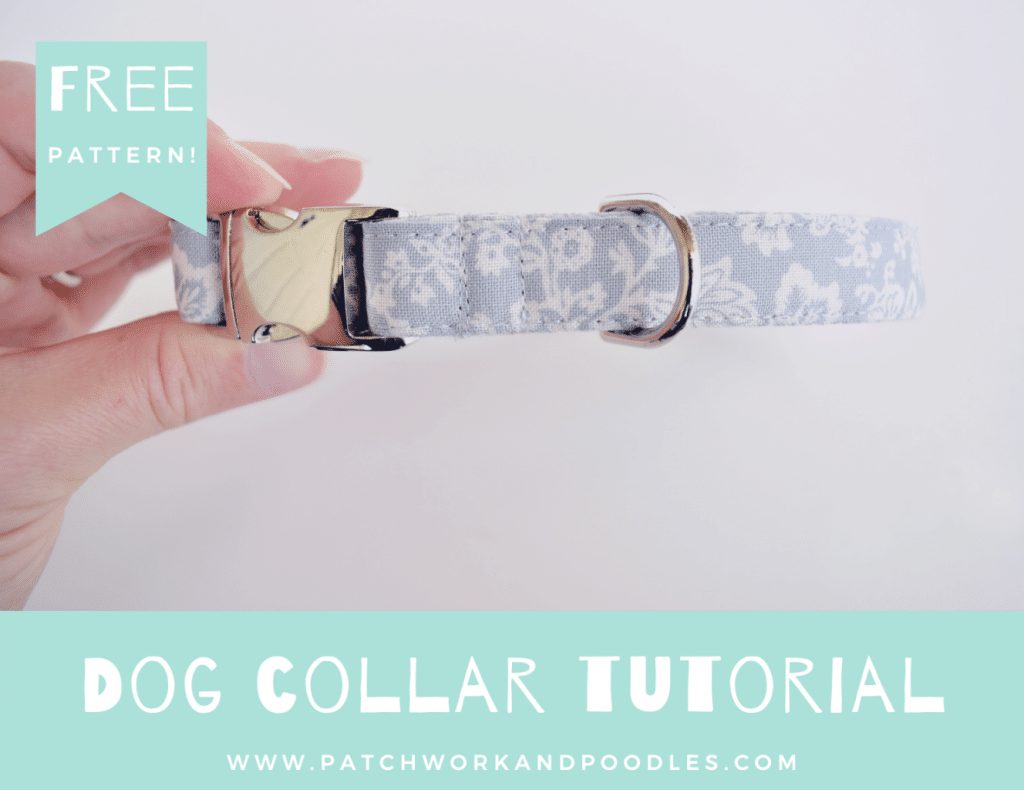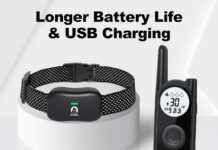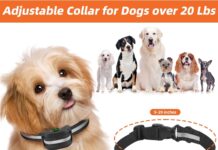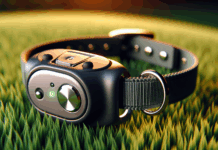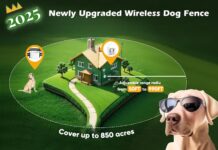When it comes to choosing the right dog collar, it’s essential to consider various features that not only ensure your furry friend’s comfort but also prioritize their safety and style.
From the material and size to the type of closure and additional functionalities, each aspect plays a crucial role in finding the perfect collar that suits your pet’s needs.
By exploring these key features, you’ll be able to make an informed decision and provide your beloved canine with a collar that not only enhances their fashion sense but also keeps them secure during every outdoor adventure.
Material
When it comes to choosing a dog collar, the material used is an important consideration. You want a collar that is durable, comfortable, and easy to clean. After all, your furry friend will be wearing it every day!
Durability
A durable collar is a must-have for active dogs. Look for materials such as nylon or leather, as they are known for their strength and longevity. These materials can withstand the wear and tear that comes with daily walks, playtime, and even the occasional roll in the mud.
Comfort
Comfort is key when it comes to choosing a collar for your beloved pet. Look for materials that are soft and lightweight, such as nylon or neoprene. These materials will be gentle against your dog’s neck, preventing any discomfort or irritation. Additionally, consider collars with rounded edges or padding for extra comfort.
Easy to Clean
Let’s face it, dogs can get messy! That’s why it’s important to choose a collar that is easy to clean. Look for materials that can be easily wiped down or thrown in the washing machine. Collars made from nylon or neoprene are often the easiest to clean, as they can be simply wiped clean with a damp cloth. Avoid collars that may require hand washing or delicate cleaning methods, as they may not be the most practical option for busy dog owners.
Size
Getting the right size collar for your dog is crucial for their comfort and safety. An ill-fitting collar can cause discomfort or even pose a choking hazard. When it comes to sizing, consider the following factors:
Length
The length of the collar is determined by the size of your dog’s neck. Measure your dog’s neck circumference using a soft tape measure or a piece of string. Leave enough room for two fingers to fit comfortably between the collar and your dog’s neck. This will ensure a snug fit without being too tight or too loose.
Width
The width of the collar can vary depending on the size and breed of your dog. Smaller dogs may benefit from a narrower collar, while larger dogs may require a wider one for added strength and support. Consider your dog’s size and breed when choosing the width of the collar.
Adjustability
An adjustable collar is a great option for growing puppies or dogs that may change weight over time. Look for collars with multiple sizing holes or a sliding mechanism that allows for easy adjustment. This way, you can ensure the collar fits your dog perfectly at all times.
This image is property of www.familyhandyman.com.
Buckle Type
The buckle type is another important consideration when choosing a dog collar. Different buckle types offer varying levels of convenience and security. Consider the following options:
Quick-release buckle
A quick-release buckle is a popular choice for many dog owners. It allows for easy on and off, making it a hassle-free option for daily use. With a simple push of a button, you can easily remove or secure the collar around your dog’s neck. This type of buckle is especially useful for dogs who may be anxious or fidgety during collar changes.
Traditional buckle
If you prefer a more secure and traditional option, a collar with a traditional buckle may be the way to go. These buckles require you to thread the collar through the buckle and secure it in place. While it may take a bit more time and effort, traditional buckles offer added peace of mind that the collar will stay securely in place.
Martingale buckle
A martingale buckle is a unique option that is commonly used for training and control purposes. This type of buckle consists of two loops – one that goes around the dog’s neck and one that tightens when the leash is pulled. This prevents the dog from slipping out of the collar, making it a popular choice for dogs that tend to pull or have slender necks.
Hardware
The hardware of a dog collar plays a crucial role in its overall functionality and durability. Pay attention to the following hardware features:
D-ring for leash attachment
A sturdy D-ring is essential for attaching a leash to your dog’s collar. Look for a collar with a D-ring that is securely attached and made from a rust-resistant material such as stainless steel or brass. This will ensure that the D-ring can withstand the tension and pulling that occurs during walks without compromising its strength or functionality.
Tags and ID attachment
A collar should have a designated area for attaching tags and identification. Look for collars with separate loops or attachment points specifically designed for tags. This will keep your dog’s identification securely in place, preventing them from getting lost or missing. It’s also important to ensure that the tags and ID attachments are easily readable and durable.
Rust-resistant materials
Dogs are known for their love of water and outdoor adventures. To ensure the longevity of your dog’s collar, look for hardware made from rust-resistant materials. Stainless steel or brass hardware is often the best option as it can withstand exposure to water and moisture without corroding or rusting. This will keep your dog’s collar looking and functioning its best for years to come.
This image is property of rogz.com.
Reflective Elements
Visibility and safety are paramount, especially during low-light conditions or nighttime walks. Consider the following reflective elements when choosing a collar for your furry friend:
Visibility in low-light conditions
Collars with reflective elements are essential for ensuring your dog is visible during low-light conditions, such as early mornings or evenings. Look for collars with reflective stitching or strips that will catch the light and make your dog more visible to passing cars, cyclists, and pedestrians.
Safety during nighttime walks
For those who regularly walk their dogs at night, collars with built-in LED lights or glow-in-the-dark materials are highly recommended. These collars provide an extra layer of safety, making your dog even more visible in the darkness. Additionally, consider attaching a clip-on strobe light to your dog’s collar for added visibility and peace of mind.
Design and Style
While functionality and safety are important, there’s no reason why your dog’s collar can’t be stylish too! Consider the following design and style features when choosing a collar:
Color and pattern options
Collars come in a wide array of colors and patterns, allowing you to choose one that matches your dog’s personality or your own personal style. From vibrant solids to fun prints, the options are endless. Consider choosing a color or pattern that will make your dog stand out or reflect their unique personality.
Embroidery or customization
For a personalized touch, consider getting your dog’s name or your contact information embroidered directly on their collar. This not only adds a touch of style, but also serves as a way to help identify your dog if they ever get lost. Many pet supply stores and online retailers offer customizable collar options, allowing you to add your dog’s name, phone number, or any other desired text.
Matching leash and harness availability
To create a cohesive and stylish look, consider choosing a collar that is part of a matching set with a leash and harness. Many pet supply companies offer sets that come in coordinating colors or patterns, allowing you to create a unified and fashionable ensemble for your dog. Not only will this look adorable, but it will also ensure that all of your dog’s gear works together seamlessly.
This image is property of cannyco.com.
Safety Features
When it comes to the safety of your furry friend, certain collar features are essential. Consider the following safety features when choosing a collar:
Breakaway or safety release mechanism
A breakaway or safety release mechanism is particularly important for cats, but can also be beneficial for dogs. This mechanism allows the collar to release or break open if it becomes caught on something, preventing choking or injury. While not necessary for all dogs, it’s definitely worth considering for pets who spend time outside unsupervised or who have a tendency to explore.
Soft or padded interior
To prevent discomfort or irritation, look for collars with a soft or padded interior. This helps to distribute pressure evenly across your dog’s neck and prevents any chafing or irritation that may occur with prolonged wear. Collars with a neoprene or fleece lining are especially popular for their comfort-enhancing properties.
No choke design
For dogs that pull or have respiratory issues, a collar with a no choke design is highly recommended. These collars distribute pressure across the chest and shoulders rather than the neck, preventing choking or injury. Look for collars with wider straps or harness-style designs to ensure your dog’s comfort and safety during walks.
Collar Type
Choosing the right collar type for your dog’s specific needs is crucial. Different types of collars offer varying levels of control, training, and comfort. Consider the following collar types:
Flat collar
Flat collars, also known as buckle or snap collars, are the most common type of collar. They consist of a simple strip or band that fastens around your dog’s neck using a buckle or snap closure. Flat collars are great for everyday use and provide a secure and comfortable fit for most dogs.
Martingale collar
Martingale collars are often used for training or control purposes. They consist of a flat collar with an additional loop that tightens when the leash is pulled. This prevents the dog from slipping out of the collar, making it a popular choice for dogs that tend to pull or have slender necks.
Prong collar
Prong collars, also known as pinch collars, are controversial but are sometimes used for dogs with extreme pulling or aggression issues. This type of collar consists of metal prongs that pinch the dog’s neck when tension is applied. Prong collars should only be used under the guidance of a professional dog trainer or behaviorist.
Head halter
Head halters, such as the Gentle Leader or Halti, provide control by gently redirecting your dog’s head when they pull. They fit over the nose and behind the ears, allowing you to have more control over your dog’s movements. Head halters are particularly useful for dogs that tend to pull or lunge during walks.
Harness
A harness is an excellent choice for dogs that tend to pull or have respiratory issues. Harnesses distribute pressure across the chest and shoulders, preventing choking or injury. They are available in a variety of styles, including step-in, back-clip, and front-clip, allowing you to choose the one that suits your dog’s needs best.
This image is property of auburndirect.com.
Water Resistance
If your dog loves water activities or simply enjoys splashing around in puddles, a water-resistant collar is a must-have. Consider the following water-resistant features:
Suitability for water activities
Look for collars made from water-resistant materials that can withstand the rigors of water activities. Some collars are specifically designed for swimming or water sports, while others are simply water-resistant and can withstand exposure to moisture without becoming damaged or deteriorating.
Quick-drying materials
Collars that dry quickly are ideal for dogs that frequently get wet. Look for collars made from materials such as nylon or neoprene, as they tend to dry faster than traditional materials. This will ensure that your dog’s collar doesn’t stay damp or develop an odor due to prolonged exposure to water.
Price and Value
While price shouldn’t be the only factor when choosing a dog collar, it’s still an important consideration. Consider the following factors when it comes to price and value:
Budget-friendly options
For those on a tight budget, there are plenty of affordable collar options available. Look for collars that offer a good balance between price and quality. While it may be tempting to choose the cheapest option available, remember to prioritize your dog’s comfort, safety, and durability when making your decision.
Longevity and durability
Investing in a high-quality collar may seem more expensive initially, but it can save you money in the long run. A durable collar made from high-quality materials will withstand daily wear and tear, reducing the need for frequent replacements. Consider factors such as the material, stitching, and overall construction of the collar to ensure its longevity.
Additional features
When comparing prices, consider the additional features included with the collar. Some collars may come with added features such as reflective elements, customization options, or matching leash and harness sets. While these features may increase the price slightly, they can provide added value and convenience.
In conclusion, when choosing a dog collar, it’s essential to consider factors such as material, size, buckle type, hardware, reflective elements, design and style, safety features, collar type, water resistance, price, and value. By carefully assessing each aspect, you can find the perfect collar that combines functionality, comfort, and style for your beloved furry friend. Remember, a well-fitted and suitable collar will keep your dog safe, happy, and looking their best during all of life’s adventures.
This image is property of patchworkandpoodles.com.

